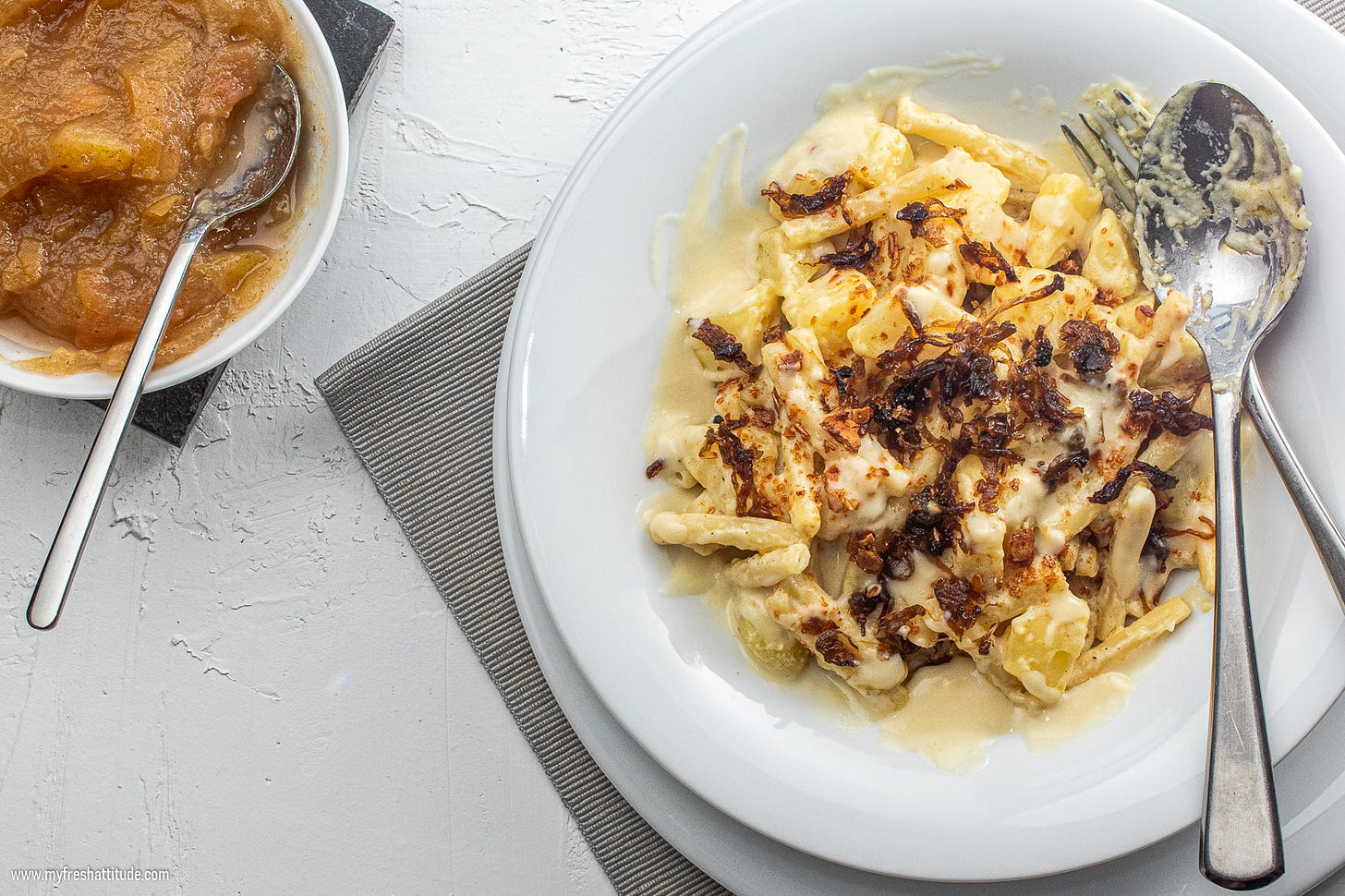Classic Swiss Alpine Food Made Vegan
Classic Swiss alpine food as vegan variations: Älplermagronen, Capuns and Potato Rösti
I’ve hiked for hours to reach a hidden waterfall, or to attempt my fist suspension bridge crossing or to reach a peak with a spectacular 360° view of the Swiss Alps. Quick access to these kinds of outdoor adventures is one reason I love calling Switzerland home.
But as a vegan, I am mostly disappointed when I come upon an alpine restaurant along the way and quickly discover there is nothing for me to eat – except maybe a small salad. Now don’t get me wrong – I love a fresh salad – but after hiking for hours, carbs are what I crave.
Alpine cuisine is dominated by staple foods that are easily made or preserved by farmers. Typically, this means a lot of milk from grazing cows or goats, products made from the abundance of milk (cheese and yogurt), cereals and preserved meats (dried or smoked). These ingredients make up the vast majority of dishes that hungry hikers or skiers enjoy while pausing on large sun-soaked decks. And the fresh air is often perfumed by the smell of melting cheese.
I recall hiking up a mountain in eastern Switzerland near Davos a few years ago. The hike was demanding and I was famished when I reached the summit of our hike. Like many Swiss mountaintop locations, there was a restaurant at the peak with a large deck and an endless view of mountains dissolving into the horizon. I noticed people enjoying plates of älplermagronen – a strange combination of potatoes, pasta, caramelized onions and apple puree that defies food logic but tastes great. There was of course, rösti with grilled sausage in a dark onion sauce. There were tourists dunking bread into a fondue – mostly frowned upon by locals during the summer months. And a group of hikers enjoying a platter of capuns and steamed potatoes while working on a second bottle of white wine.
Lovely…but nothing really satisfying for a vegan to eat…and that’s a shame because I know it is not that difficult to prepare vegan variations of classic Swiss alpine food.
I accept there won’t be many vegan options for me anytime soon as I continue to enjoy the wonders of hiking the Swiss alps. I’ve learned to pack my own food for those trips but that still doesn’t mean I can’t enjoy a little bit of Swiss alpine tradition at home…and that is why I’ve created my variations of some Swiss classics.
Please leave a comment below and tell me about your experiences while trying to find something vegan to eat during an alpine adventure.
Älplermagronen
I remember feeling extremely skeptical the first time a plate of this traditional Swiss mountain food was placed in front of me. It just seemed like a confused mess of carbohydrates and grated cheese. I totally discounted the heavily caramelized onions.
In retrospect, I guess my reaction was a total insult to my partner (now wife). It was also a major error in judgment.
The humble ingredients worked marvelously together to form a satisfying and rich plate of food. And those onions…well, they made the dish irresistible. The sweetness of the onions and their slightly crunchy texture acted like the perfect seasoning to balance the rich load of carbs. Every mouthful was an unexpected explosion of flavor.
Be sure to allow enough time to carefully caramelize the onions – the process will take about 30-45 minutes and is extremely important to the success of this recipe. Serve with a small bowl of apple sauce on the side – it seems strange but like the onions, the apples supply acidity and a certain refreshing break that act as a sort of seasoning. Try it…and I hope you take the time to make your own apple sauce.



